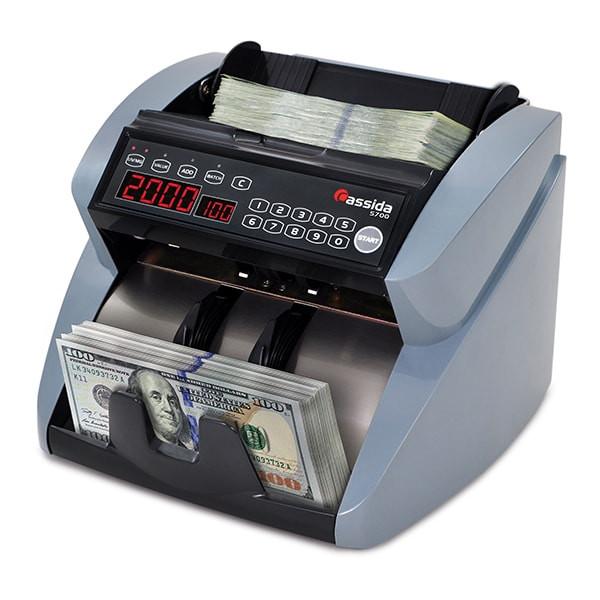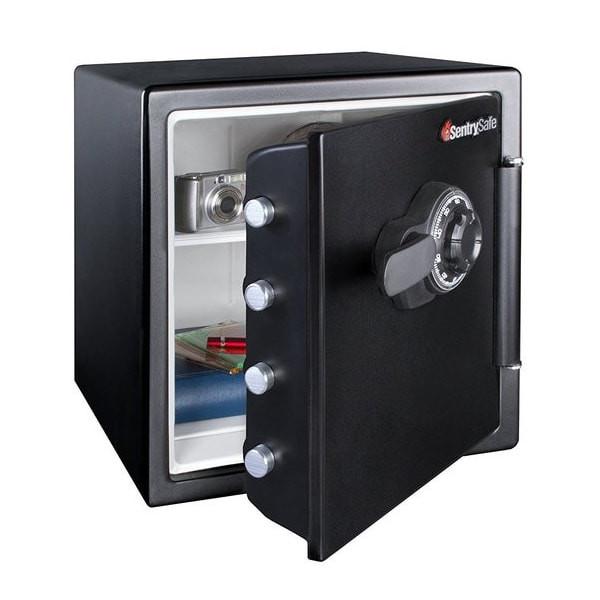History of the Cash Register

Every time you visit a store or restaurant, you interact with someone using a cash register. You may not even pay any attention to the machine. But how did we get to this point? When did salespeople first start using a cash register, and what did it look like?
The Abacus

The earliest beginnings of the cash register can be spotted in history over 4,500 years ago, with the development of the abacus in the Middle East. A design that was improved on by many cultures over time, the original abacus was a row of grooves in the sand with pebbles placed in them to count ones, tens and hundreds. The grooves were later moved to a wooden board for portability, and eventually the design evolved to the beads strung on metal bars that we recognize today as a children's learning tool. Vendors still use the abacus today in areas with limited access to electricity.
The Cash Drawer

Jumping in history to the mid-1800s, the next major step towards the cash registers we know today was the cash drawer. Shopkeepers used a cash drawer to hold bills and coins in an organized container - they put cash in when customers made a purchase, and returned change to them from the same drawer. Not unlike today, right?
The flaw with the cash drawer was that it had no system for calculating the transactions over the course of the day. As business boomed, many shop owners no longer worked the counters of their shops themselves, but hired staff to serve customers.
With no daily records of money moving into and out of the cash drawer, many business owners found themselves losing money despite strong sales. They were victims of clever thieves and dishonest cashiers, who helped themselves to the cash when no one was looking. There is no system for calculating transactions like there is for cash registers or check registers that are used today.
The Cash Register

In 1870, one of these business owners fought back. James Ritty, a saloon owner developed the first mechanical cash register, which he named "Ritty's Incorruptible Cashier." It used metal taps to register the value of each sale, and had an adder that totaled the value of all the sales at the end of the day, and a bell that rang at each sale. The registration of a sale was completed with the process of returning change. This popularized the system of pricing items in odd amounts (like $0.99) to force the cashier to open the till to return change, ringing the bell and announcing the sale to the owner.
Eventually James Ritty became overwhelmed with running his cash register business and his saloon, so he sold all of the interest in his cash register business to a Cincinnati man by the name of Jacob H. Eckert. Eckert was a salesman who sold china and glassware and had created the National Manufacturing Company. Eckert then sold the National Manufacturing Company in 1884 to John H. Patterson. Patterson then renamed the company the National Cash Register Company.

Patterson then went on to improve the functionality of the cash register by adding a roll of paper that transactions could be printed on. This is how the receipt was created and many transaction disputes come to an end. No longer were transaction issues a word game, but there was a piece of paper to prove it. However in 1906, the cash register was improved even more when a man named Charles F. Kettering, an employee for the National Cash Register Company, created a cash register that contained an electric motor.
All the way up until 1915, the cash register had found a home in virtually every retail store. The millionth register sold in 1911 and shopkeepers were able to keep track of their profits and their losses and keep their inventory in check. This made businesses even more competitive because they had actual numbers to go on. If there was a loss, then the shopkeeper would find a way to improve upon that loss.
The National Cash Register Company found so much success because in the 1880s and 1890s, Patterson found a way to sue all of the companies trying to compete with them in cash register sales. Some of these businesses were purchased by the National Cash Register Company and others were just put out of business all together. This was before antitrust laws existed, but in 1912 Patterson was charged with criminal conspiracy under the new Sherman Antitrust Law. The National Cash Register Company accounted for 95% of all cash register sales at that time. However, the National Cash Register Company remained the top seller of cash registers with 5900 employees on the payroll. It was in 1924 that they sold their two millionth machine.
Cash Registers Today
Since then,cash registers have touch screens and use the latest technology to compute transactions involving cash, checks, and credit cards. We see different variations of them in our grocery stores, department stores, and mom and pop stores. However, there is an initial on most of these cash registers that just might look familiar and that is the letters NCR, which stands for the National Cash Register Company. They certainly saw their ups and downs from being at the top of their game in 1957 in the computer market to their buyout by AT&T in 1991, but they gained their independence and once again began developing many of the state of the art cash registers we see today.




Leave a comment